John Hurrell – 14 July, 2011
As with pieces of a jigsaw puzzle, you try and figure out the relationships of the eleven exposures spatially to each other, within the city and this locality - the Hiroshima Peace Memorial Park. Most are taken on both sides of the Ōta River (in two directions) as it makes its way through Hiroshima to the Seto Inland Sea.
Auckland
Fiona Amundsen
The First City in History
15 June - 15 July 2011
This Fiona Amundsen exhibition of eight colour and three black/white photographs taken in Hiroshima, the city famous as the site of the dropping of the first atomic bomb, is on display in the smaller Gallery Two at St. Paul St. Typically it presents all of this artist’s characteristics: early morning, grey sky, no people or movement, urban architecture, a cool unsaturated colouration, often a river at three-quarter angle, and an overwhelming clinical ambience in general. It is a formula she has been using for almost a decade now, though the black and white images (a possible allusion to the documentation of August 6, 1945) for her are unusual.
Yet to those familiar with her methodology this show is not boring, not so much because of the qualities of the actual photos themselves (for she is getting repetitive now) but more because of the site of Amundsen’s imagery - its historical significance - and the interconnectedness of the shots. As with pieces of a jigsaw puzzle, you try and figure out the relationships of the eleven exposures spatially to each other, within the city and this locality - the Hiroshima Peace Memorial Park. Most are taken on both sides of the Motoyasu River (up and down stream) as it makes its way through Hiroshima to the Seto Inland Sea.
By looking at the foothills, paving stone design, certain buildings, monuments and bridges, it is possible to see the same items reoccurring in several images. From this information you can sometimes figure out where Amundsen has placed her tripod to make other photographs, the various alignments, and what is ‘behind you’ in the imaginary space you inhabit when you scrutinize these urban vistas.
Despite the hideous horror of events 65 years ago, its unbelievable scale, these much later images of Hiroshima convey a meditative optimism. Views of Japanese cities are probably of interest to most New Zealand eyes, the degree of industrialisation in that society being so different from our own, but today of course the recent earthquakes, tsunamis and reactor meltdowns have altered our perception of these coastal communities - and indeed made us very aware of our own vulnerability.
In an indirect and coincidental way Amundsen with her documentation of this intact, now fully functioning urban community, succeeds in making us (in our own historical context) think about its accompanying shadow of manmade and naturally-caused destruction - this disturbing mental presence an impetus to anticipating and limiting such calamities in the future.
John Hurrell


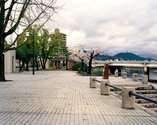
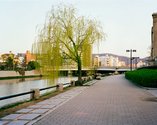
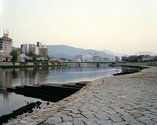
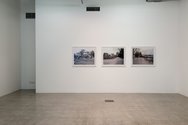

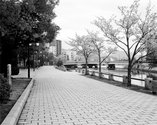
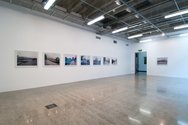
 Advertising in this column
Advertising in this column Two Rooms presents a program of residencies and projects
Two Rooms presents a program of residencies and projects



This Discussion has 0 comments.
Comment
Participate
Register to Participate.
Sign in
Sign in to an existing account.